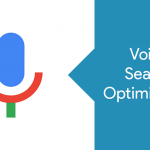
Web design has evolved over the years from a plain canvas wall with text and pixel images to the kind that helps increase conversion and improve business. With WordPress themes, people have been able to build stunning websites even without any coding knowledge.
The website building game changed all together. Designs were ready-made and even tailor-made according to your requirements, thanks to the thousands of themes available on WordPress.
You would think with all these amazing tools available, one can build a foolproof website with the best design possible. Unfortunately, that isn’t the case.
There are several common web design mistakes made even today. But there are solutions to everything. More than having solutions though, there are ways you can avoid these mistakes.
Errors in Key Design Elements
Some designers get carried away with the ‘design’ aspect of the job and forget that web design has a few purposes that a client may need for his website. For instance, not using the right call-to-action buttons. These buttons are crucial to any business website.
If a user doesn’t convert into a customer this could be one of the reasons why. Easy navigation, uncomplicated layout, and clear call-to-action buttons are very important for a transitional website.
Cluttering the Web-Page
There may be a lot of information you or your client may need to be put up on a web-page. But as far as web design goes, clutter drives users away. Imagine you walk into someone’s home and open the door to find it filled and cluttered with unnecessary items.
You wouldn’t want to stay there, would you? Similarly, users find it irritating and distracting to stay on a web-page with too many pieces of information.
They can’t find what they need, they won’t be able to navigate the page properly, and they would get lost in the clutter.
De-clutter your web-page by consolidating all the information and putting them in other pages. Keep what is essential and do away with anything else. If there isn’t a reason why a particular button, image, or a piece of text is on a page, you don’t need it to be there.
Under-Utilizing the Header, Footer, and Sidebars
There is so much you can do with the header, footer, and sidebars in a website. They are not just meant for advertisements. If there are too many ads anyway, it’s a design flaw, to begin with.
But these elements are often underutilized and saved for banner ads. There is so much good content you can put up in these spaces. You can make clever posts or even something that will make navigation more effective.
Headers, for instance, are great to showcase what your website is all about. A high-resolution image or even a video is very captivating. It will increase user engagement and keep your bounce rate low.
Sidebars can be used to display your social media time-lines like Instagram or Twitter. These feeds will increase user interaction. You can also have chat bots set up in the sidebar to help users reach you for any queries.
Poor Content
Content is a key element in design. It often takes a backseat when people are thinking of good design. Content keeps a user on the web-page.
Good visuals and text give the user the idea that it’s a professionally made website that he or she will benefit from. Your content should be free of errors and plagiarism.
Search engines are quick to rate down websites filled with lifted content filled with errors. Good and clean content will help you with SEO as well. Keep track of your bounce rate to determine whether your content works or not. If it doesn’t, it’s time for a revamp.
Not Taking User Information
As mentioned earlier, an effective web design means high conversions. If you want conversions, you need users’ information like their contact details. With these details can further broaden your marketing strategy and do several A/B testing.
If you don’t capture user information, you are not benefiting from your website. You can get users’ information by simply creating an opt-in offer in your homepage. Many users will give their information to receive newsletters, updates, and offers.
Having Auto-Start Videos and Sounds
There’s hardly anything more annoying than opening a website and a video plays on its own or having music blaring out of it. Users will quickly close the website never to open it again. Something like this throws the user off because it is highly unexpected.
If you need to have videos playing, put it on the sidebar so users can opt to play it if they want to see it. Auto-playing videos with sound are a big turn off and you need to do away with them if you already have them running on your website.
Giving Away too Much
An effective web design should keep the users wanting more. That’s when they will navigate through your website for more information. Your homepage should be a tease with just enough information for users to be hooked.
Keep it simple, clean, and clear. With clear call-to-action buttons and minimal design, you will be able to create a desirable website for users to stay on.
Irregularity in Fonts
You love fonts, we understand. But don’t overuse them in a website. A user will find inconsistency and that’s not ideal. Use just about two or three fonts that are pleasant on the eye and is a good fit for the brand.
A user should be able to associate your brand with the font you use. It is also completely acceptable to use a safe font like Sans Serif throughout your website.
Web designers must keep themselves updated with the new happenings in the field of design. Big brands are always coming up with various new design elements and it’s important to keep a close eye on such updates. Read up more on what design can do for a design and apply your learning in your job.


